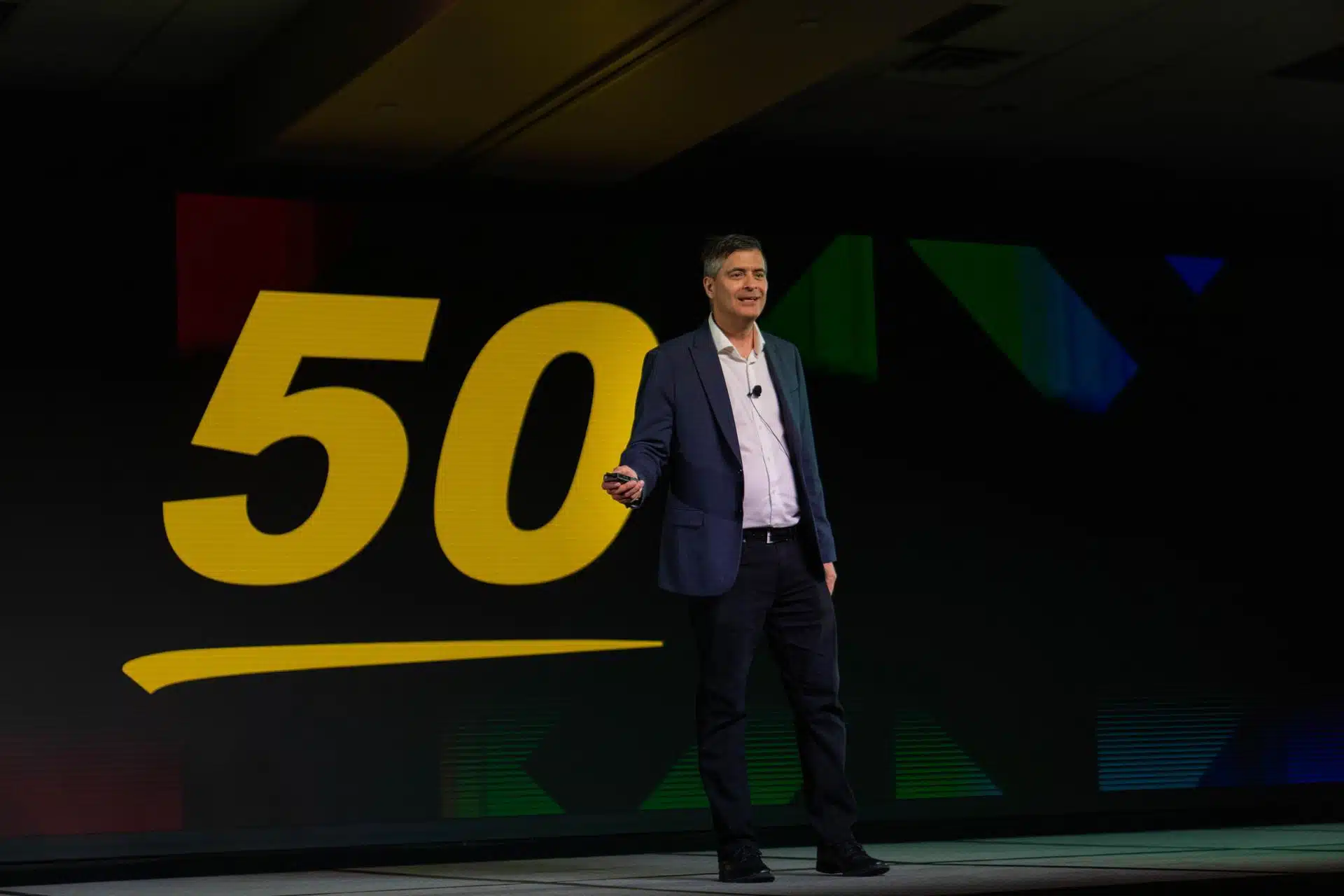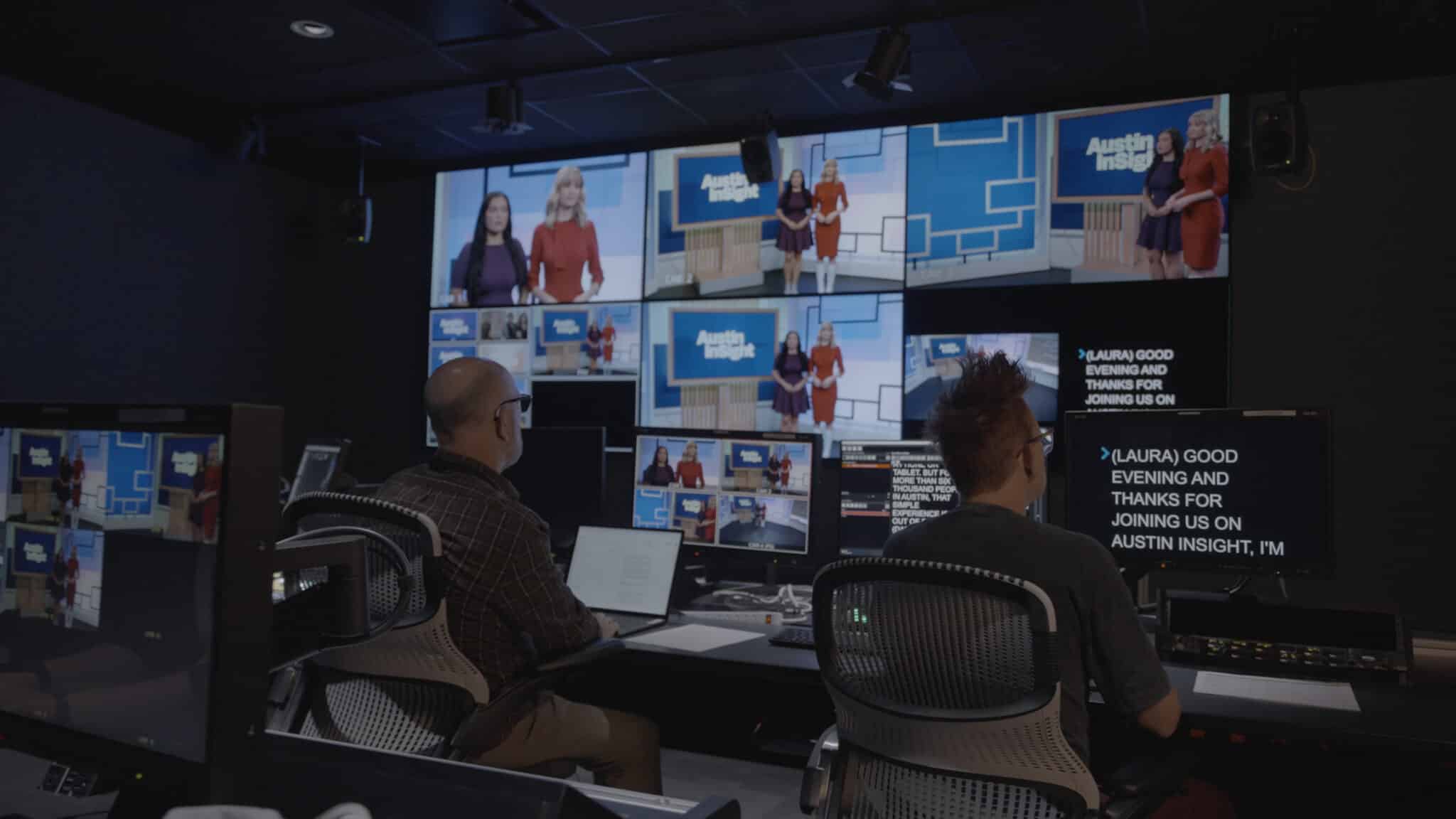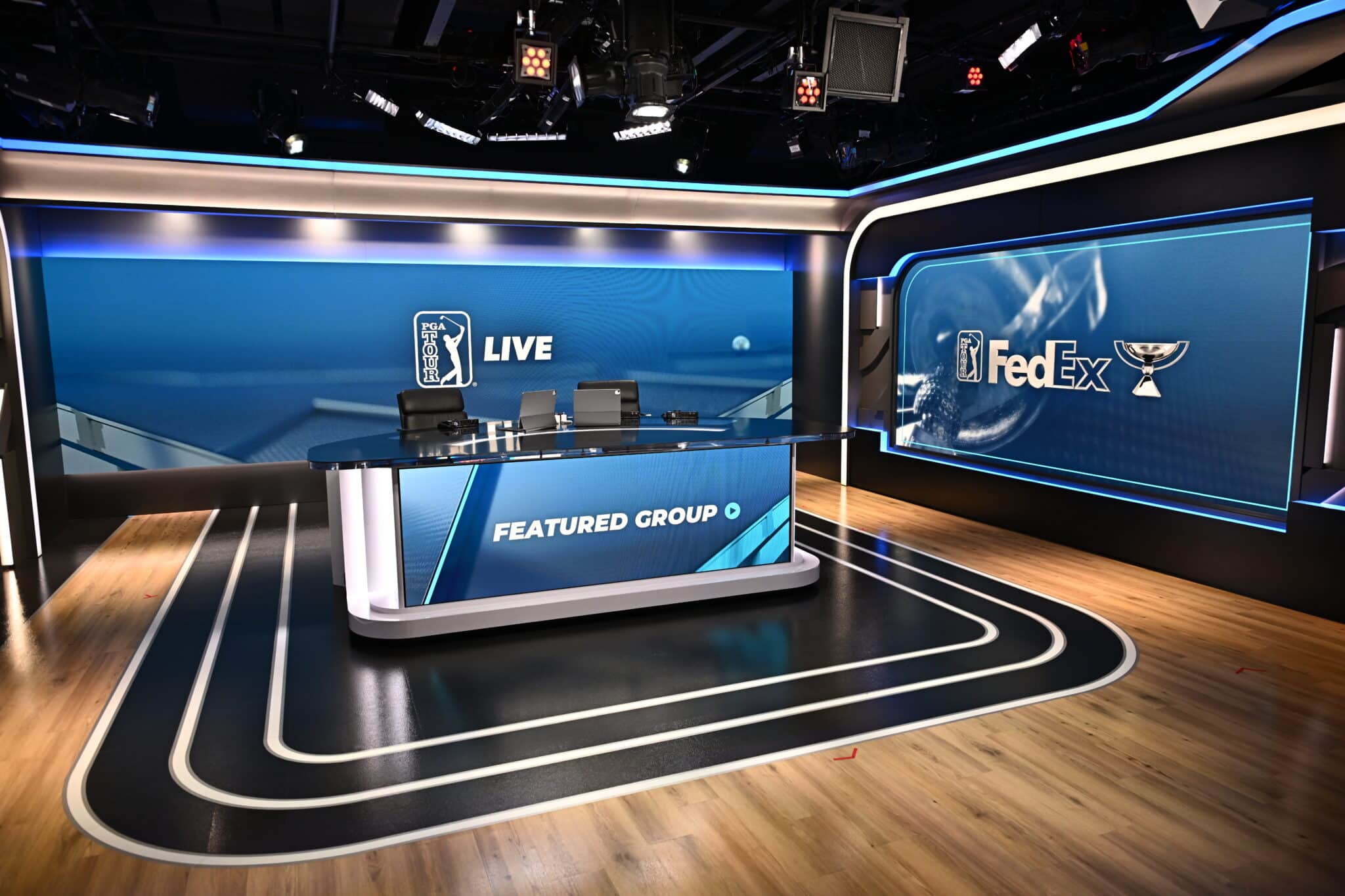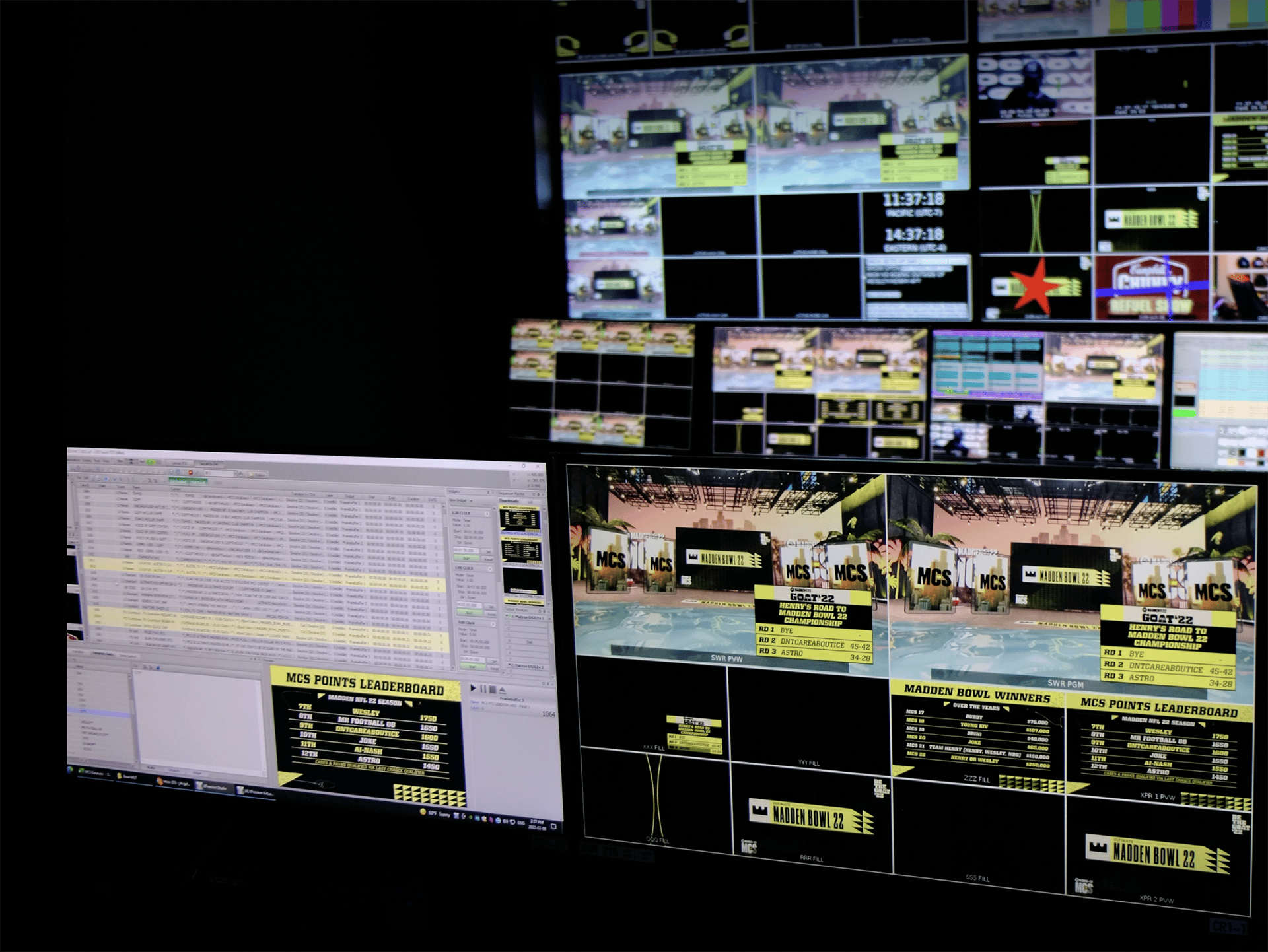When the pressure’s on and the cameras are rolling, you need partners who don’t flinch.
At Ross Video, we’ve built our reputation on stability. With over 50 years of family ownership and 33 consecutive years of growth, we offer more than just technology—we deliver continuity, deep expertise, and rock-solid support when it matters most.

Broadcasting can be an unforgiving industry, where downtime during a live event can spell damage to a company’s reputation and finances. Downtime and technical hiccups are a reality for any industry, but frequent reliability issues in broadcasting can have cascading effects that impact everything from viewer trust to a team’s appetite for innovation and creativity.
While eliminating downtime and technical glitches outright isn’t realistic, minimizing them and limiting their impact is. To do so, broadcasters must partner with reliable technology vendors who have a strong track record of long-term stability and reliability.
Below, we’ll explore why long-term stability is so critical, and how Ross Video’s 50-year history in the broadcast industry helps us provide reliable technology and services to the largest companies in the world.
Problem: The risks of volatility in technology vendor relationships
In broadcasting, stable technology is non-negotiable. And that stability starts with a reliable technology vendor. Despite this fact, many broadcasters find themselves working with one or more technology platforms that cause more volatility than stability.
This volatility often stems from short-term thinking, lack of industry experience, or limited focus on long-term stability. Whatever the cause, this instability creates significant risks for the broadcaster locked into these vendor contracts. These risks are particularly acute during high-stakes broadcasts where failure and downtime is simply not an option.
The potential risks of partnering with a volatile—rather than stable—technology partner are varied, but they all spell trouble for the broadcast or media production company in some form. Let’s explore three of those risks.
The first risk is service interruptions. These are one of the most critical consequences of vendor volatility. During live events, even a brief technical failure or procedural hiccup can result in delayed broadcasts, glitchy viewer experiences, angry advertisers, and reputational damage. Without dependable vendor support, broadcasters are left scrambling to fix issues on their own—often at great financial and reputational cost.
The second risk is personnel turnover. Vendors that lack product stability often also lack workforce stability. This only compounds technical and support issues, if they exist. When key support staff are frequently replaced, continuity is lost, and customers are forced to repeatedly onboard new representatives. This lack of familiarity with workflows slows down problem resolution and adds unnecessary complexity to an already demanding production environment.
Further compounding the problem are rushed product updates and inconsistent releases—often driven by a “release first” mentality that prioritizes speed over stability and usability. These offerings frequently miss the mark for end users and create new operational risks. This is particularly common from vendors with a short-term revenue focus that’s disconnected from real-world needs. Outdated or poorly maintained systems can’t keep pace with the quick moving demands of the broadcast industry. This creates scalability issues, bottlenecks in production workflows, and ultimately, missed opportunities to innovate and grow.
These three risks ultimately lead to operational inefficiencies, increased costs, lost time, and diminished profit margins—costing broadcasters both revenue and precious production hours in high-pressure environments. Whether it’s the expense of emergency repairs, overtime for production staff, loss of advertiser trust, or declining viewership, the impact of vendor instability can ripple through every facet of the broadcast company.
Solution: The value of trust and stability in technology partnerships
Choosing a broadcast technology partner is far more than a transactional decision—it’s a strategic commitment that can shape your long-term success.
In an industry as demanding as broadcasting, where even minor disruptions can lead to cascading consequences, trust and stability in vendor relationships are essential.
Partners with a proven history of stability offer more than just technical solutions—they deliver continuity, reliability, and peace of mind. These vendors provide consistent support structures, ensuring that critical operations run smoothly even during high-pressure moments.
Their familiarity with customer workflows reduces learning curves and makes transitions to new tools or systems seamless. This minimizes disruptions and allows broadcasters to focus on innovation and growth, rather than troubleshooting avoidable issues.
Stability also fosters resilience. Vendors with long-standing experience have weathered industry changes and adapted their solutions to meet new demands. This combination of industry insight and institutional knowledge ensures they can anticipate future trends, provide scalable solutions, and keep customers competitive in an always changing landscape.
Ultimately, trust in a vendor translates to operational confidence. When you partner with a reliable, stable vendor, you gain the assurance that your business is supported by a team committed to your success—across engineering, support, and service—today, tomorrow, and beyond.
The risks of vendor instability highlight the urgent need for long-term stability and trust. This is where Ross Video stands out, offering a legacy of reliability, a customer-first approach, and proven processes that help broadcasters overcome challenges with confidence.
Ross Videos’ stability in broadcasting is 50 years in the making
Organizations navigating today’s fast-paced media landscape require solutions that not only meet their immediate needs but grow and adapt alongside them. Achieving this level of reliability and adaptability starts with choosing the right partner—one that demonstrates consistency, a customer-focused approach, and a commitment to long-term success.
Here’s how Ross Video has built up that trust and stability over 50 years.
A legacy of stability
For over 50 years, Ross Video has been family-owned, providing broadcasters with a level of consistency and generational industry knowledge that is increasingly rare in the industry.
The company’s 33 consecutive years of growth are a testament to our ability to adapt while maintaining steady operations. Unlike vendors prone to corporate restructuring or shifting priorities, Ross Video’s longevity offers clients the reassurance that their technology partner will be there when it matters most, regardless of external market fluctuations.
Adaptability and stability in action: How Austin PBS built a new Media Center from the Ground Up
Stability in a technology partner isn’t just about maintaining existing operations—it’s about helping clients adapt to unforeseen challenges. This was the case for Austin PBS, a non-profit public broadcaster.

As production standards evolved and audience expectations with them, Austin PBS embarked on a long-term project to upgrade its technology. Spanning over seven years, the project culminated in the creation of the Austin Media Center, a state-of-the-art facility built from the ground up.
The project, years in the making, faced a series of daunting setbacks: COVID-related delays, global equipment shortages, and a once-in-a-generation Texas freeze that flooded much of the newly installed infrastructure. Austin PBS needed more than vendors to successfully overcome those challenges. They needed partners who could bring expertise, resilience, and trust to the table.
Customer-first approach
At the heart of a trusted partnership is the ability to listen, understand, and respond to customer needs.
Ross Video takes customer feedback and collaboration to heart, and uses it to continuously improve our products and service.
One example of Ross Video’s customer-first approach is our tailored training programs and risk-managed upgrades. These programs and development protocols ensure seamless integration of new systems into customer workflows. This helps broadcasters avoid downtime and maximize operational efficiency, without having to shift to new systems.
Ross Video has built its reputation on fostering long-term relationships and working collaboratively with its clients. John Denison, Co-Founder of Niles Media Group (now part of LTN), described it best:
A hands-on approach: How PGA Tour Studios transitioned seamlessly to Ross Video
Investing in new broadcast technology is only part of the equation. Ensuring a smooth transition for production teams is just as critical. This was the challenge faced by PGA Tour Studios as they upgraded their production infrastructure.

Ross Video not only delivered cutting-edge broadcast solutions but also provided in-person training to ensure PGA Tour Studio team could quickly adapt to a new graphics system. This training eliminated disruptions and helped the production crew maximize their new system’s capabilities from day one. These proven practices are underpinned by Ross Video’s longstanding code of ethics—reinforcing our commitment to transparency, accountability, and doing business the right way.
A culture of expertise
Behind any reliable service is a team of experienced professionals, and Ross Video’s strong company culture plays a significant role in delivering consistent support.
By prioritizing employee retention and professional growth, Ross maintains a knowledgeable workforce that understands client workflows and challenges. This stability in staffing reduces the disruptions caused by turnover and ensures broadcasters always have access to experts who are familiar with their systems and needs.
Ross Video’s culture of expertise is evident in its design philosophy. Products like Ultrix feature hot-swappable components that allow maintenance without disrupting live operations—while systems like openGear use features such as DataSafe to streamline card replacements and preserve settings.
Innovation without compromise
Innovation in broadcasting technology is critical, but it must not come at the expense of reliability.
Ross Video prides itself on developing and delivering innovative solutions that push the industry forward, but that remain adaptable to new demands—from hybrid workflows to cloud-based production. Customers can confidently scale their operations knowing their tools are designed to meet both current and future needs.
Ross Video’s innovations, like the Voyager virtual graphics engine and Ross Production Cloud, showcase how the company supports broadcasters in adopting hybrid workflows. These solutions are designed for scalability, enabling broadcasters to confidently embrace new production models while maintaining reliable operations.
Pushing boundaries without sacrificing stability: EA Sports Madden Championship Series success
Innovation in broadcast technology must balance cutting-edge advancements with operational stability. EA Sports faced this challenge when transitioning its in-person Madden Championship Series events to a fully virtual format.

To make the transition seamless, they turned to Ross Video’s Voyager graphics engine, powered by the Unreal Engine, along with Lucid Studio control—Ross Video’s intuitive interface designed specifically for virtual production. These tools allowed EA Sports to create an immersive, interactive virtual studio while maintaining the stability needed for a high-profile, live esports event.
Ross Video’s Rocket Surgery Virtual Production team created a virtual studio set that works seamlessly with their production.
Proven processes and tailored solutions
Upgrading technology in live broadcasting requires precision to avoid costly disruptions.
Through close planning with customers and proven implementation practices, Ross Video helps broadcasters modernize with minimal disruption and near zero downtime. This begins with a thorough evaluation of existing infrastructure to identify risks and design seamless transition strategies. Using modular systems like openGear and Ultrix, Ross works closely with customers to plan incremental upgrades—tailoring solutions to their needs and avoiding the disruption of full overhauls.
Pre-deployment testing is central to Ross Video’s approach. By replicating workflows in controlled environments, Ross validates hardware and software compatibility to prevent unforeseen issues during deployment. Tailored training programs further ensure teams can maintain productivity post-upgrade.
At Ross Video, we take stability and reliability seriously. It’s a tenant that we’ve placed at the core of who we are as a company, and what we value as a team. For more than 50 years, we’ve provided cutting edge products and support to broadcasters around the world. But cutting edge technology is nothing without stability and trust behind it. Together, you have a winning combination of technology and support that pushes the boundaries of what’s possible in broadcasting and content production.
Want to learn about a specific product or our suite of solutions? Contact us today to speak with an expert about Ross Video’s suite of broadcast tools.